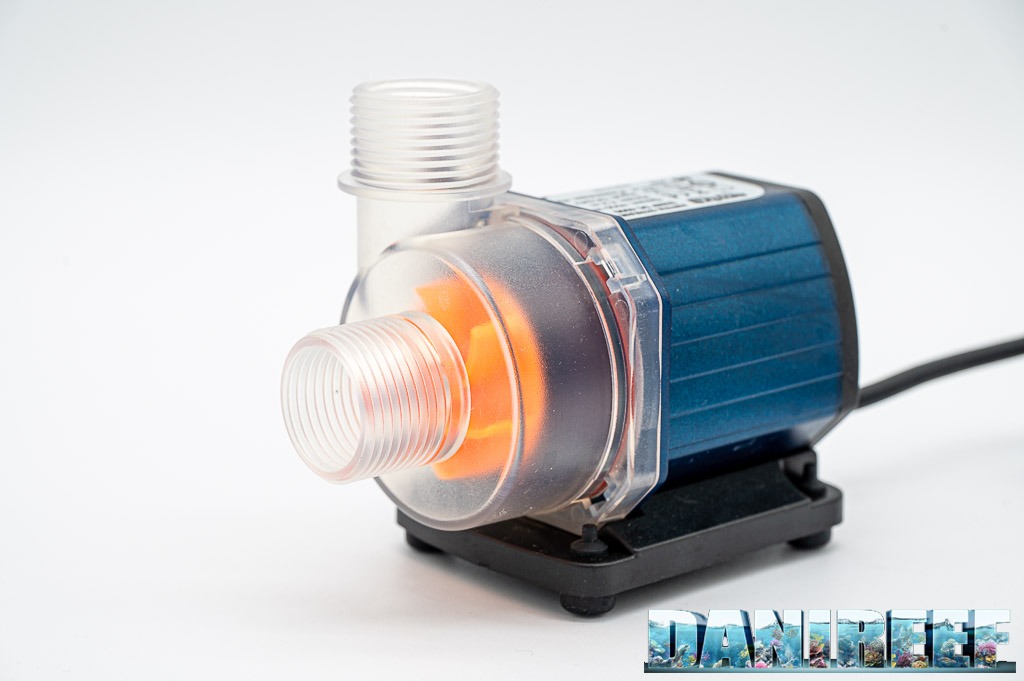
We have been playing around with the Amtra Stream Sump 4000 return pump for some time, and we have found its performance to be incredibly good and very close to what the company itself claims.
Amtra is not the company you would normally think of when you want to buy a new return pump, so we approached this new Stream Sump 4000 with a lot of curiosity. Let’s keep it short. Not only did we find no weaknesses, not only is the performance remarkably similar to what the company claims, but we found spectacular ease of maintenance and an extremely low noise level. You just have to go ahead and read our review to find out all the data we discovered.
The pump is adjustable by 9 steps and runs on 24V, excellent technical features that could make it the choice as a rising pump for a large number of marine aquariums. We really liked the choice of colors, and especially the impeller colors, as well as the transparent volute. The pump comes with two pairs of hose connectors of different diameters. (I recommend you never use the smaller hose holder.)
The pump is an alternating current centrifugal pump, but operating at low adjustable voltage. We measured, as our usual, head, flow rate and consumption.
For the head we used the usual perfect static method. For the flow rate we used the flow meter DigiFlow 6710M and for the consumption we used the RCE PM600.
The video review of the AMTRA stream sump 4000
Before we begin our review, with all the technical data, we direct you to our very complete video review, where we not only talk about the pump and its performance, but also tell you what the head is, and most importantly, we dwell on the differences between technical and measured values. We advise you on how to size it, and we physically show you our tests for the first time. A somewhat long video but a must-see, indeed. And we would love to hear what you think about this new format.
Technical Specifications AMTRA stream sump 4000
| European Version 100-240 V 50/60 Hz DC 24 V | |
| Maximum flow rate: | 4,000 l/h |
| Maximum consumption: | 43 watt |
| Head: | 4.2 meters |
| Width | 7 cm |
| Depth | 14.5 cm |
| Height | 10 cm (body only) |
| Official price | 159.99 EUR |
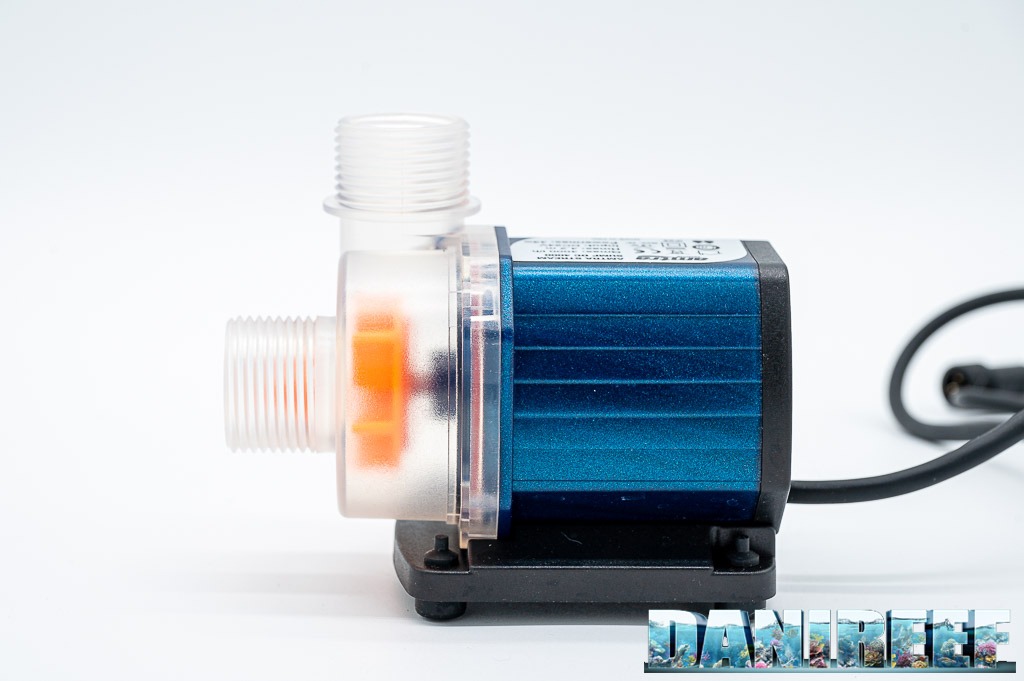
The Amtra stream sump 4000 is stated to have a very good energy efficiency of 93 liters per watt consumed and an economic efficiency of 25 liters per second per euro (but the on-road price is much lower as we will see at the end of the article) and thus a benchmark value of 8,400 l*m/h. A value that is good for most Italian tanks.
At a relatively low cost, you can buy a very solid and very safe pump given the low voltage operation, dimmable on 9 steps, and starting with very good basic features. Very good energy efficiency, average for the economical one, but very good if we consider its on-road price. Let us now see what our lab tells us, and how this fits within the values we have measured so far for all the other pumps.
The construction
The pump is simple, and has the classic cylindrical development. It comes in an innovative, almost iridescent blue livery with a very bright orange impeller and a transparent volute, that then allows the impeller to be inspected without having to open the pump. For ease of maintenance the cap screws on and off by hand, a great thing let me tell you. In seconds you can open the pump and close it again, without the use of tools, and without screws that could oxidize over time. In the video you can see how quickly it can be done.
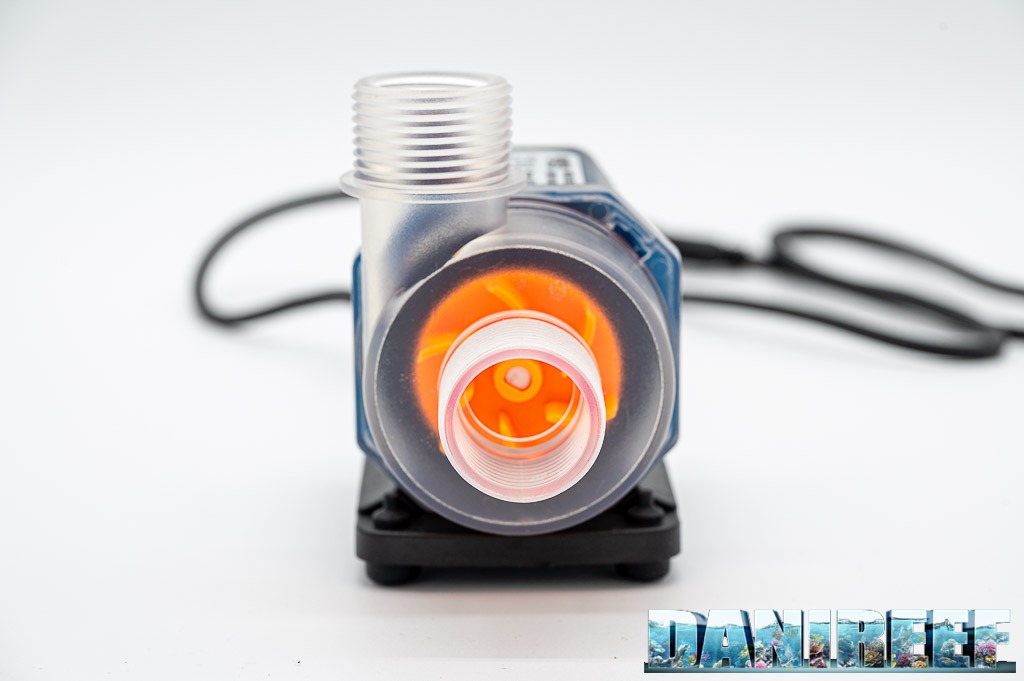
Inside the package you will find the pump and two pairs of hose connectors of different diameters. I recommend you NEVER USE the smaller hose holder.
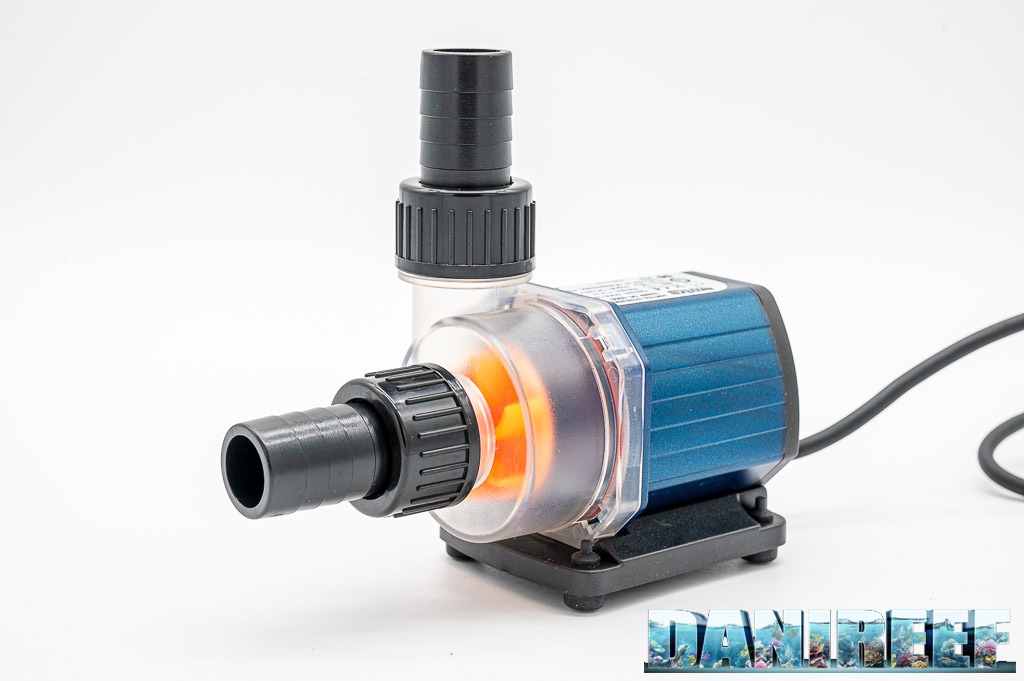
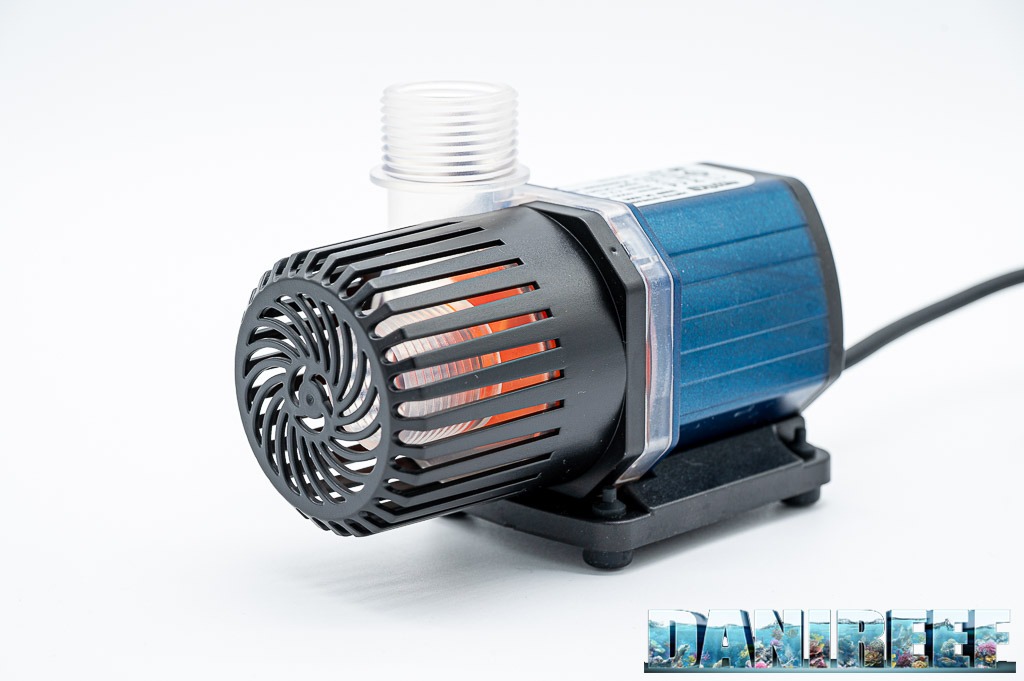
The impeller is modern with 6 curved blades. And this makes a difference from the old similar pumps with similar flow rate – it makes the pump much more efficient.
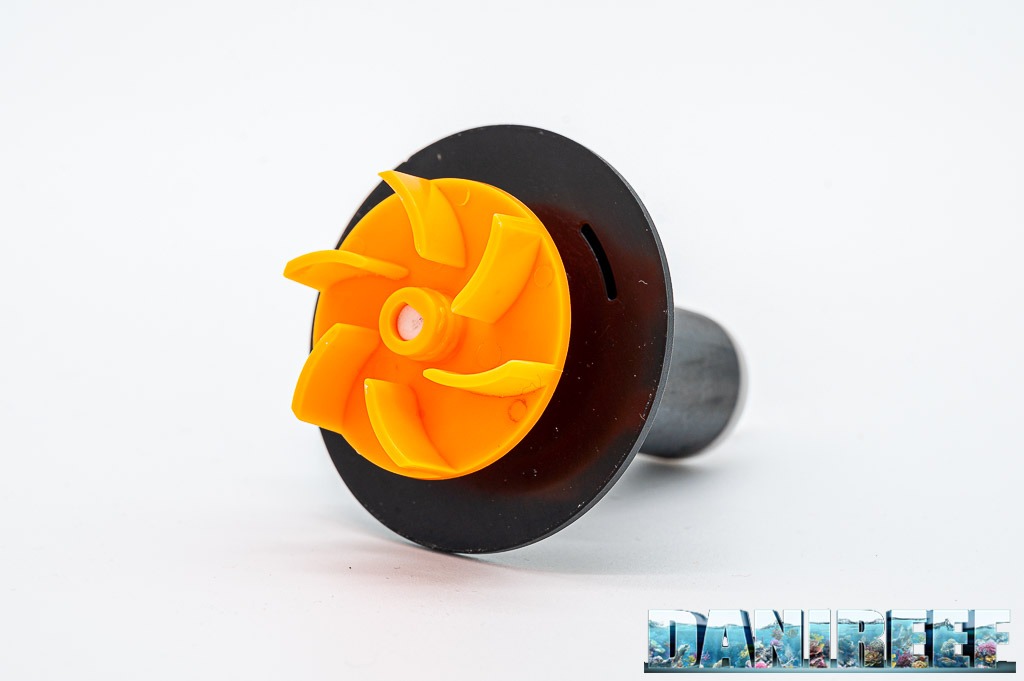
The orange impeller drives me crazy. I don’t know what you think of it, but seen inside the clear volute it is a sight to behold.
How to control the Amtra Stream Sump 4000
The main feature of this pump is that its flow rate can be set to 9 power steps. Basically, through the built-in controller, we have the ability to set the flow rate (and head) to 9 pairs of values by decreasing or increasing the revolutions of the motor, which we remind you is 24 V. There is also a button to stop the pump for 15 minutes to feed fish and/or corals. The pump flow rate is shown in the small liquid crystal display that indicates the mode of operation with 2 or 3 dashes and the operating speed.
There are 2 modes of operation. Constant flow with two dashes or wave generation with 3 dashes. Honestly, in my opinion, wave generation is not needed in a reef marine aquarium. But there are perhaps many situations, unknown to me, where it might come in handy. In the wave generation mode, the flow rate decreases by about a third.
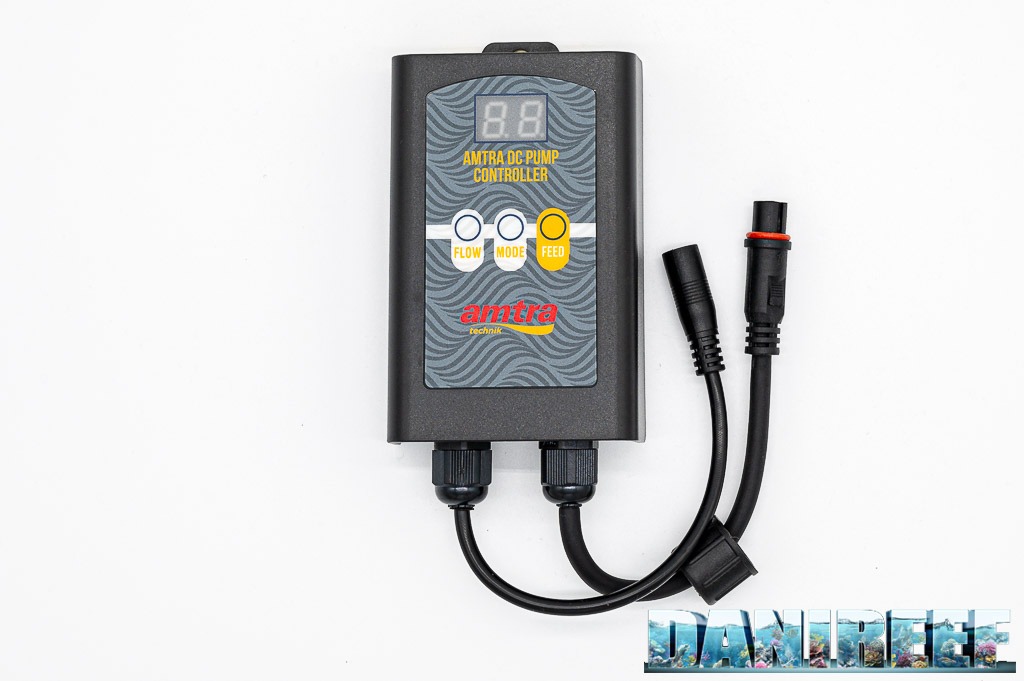
The pump connects to the controller and power supply via a pair of connectors. The power supply is generously sized.
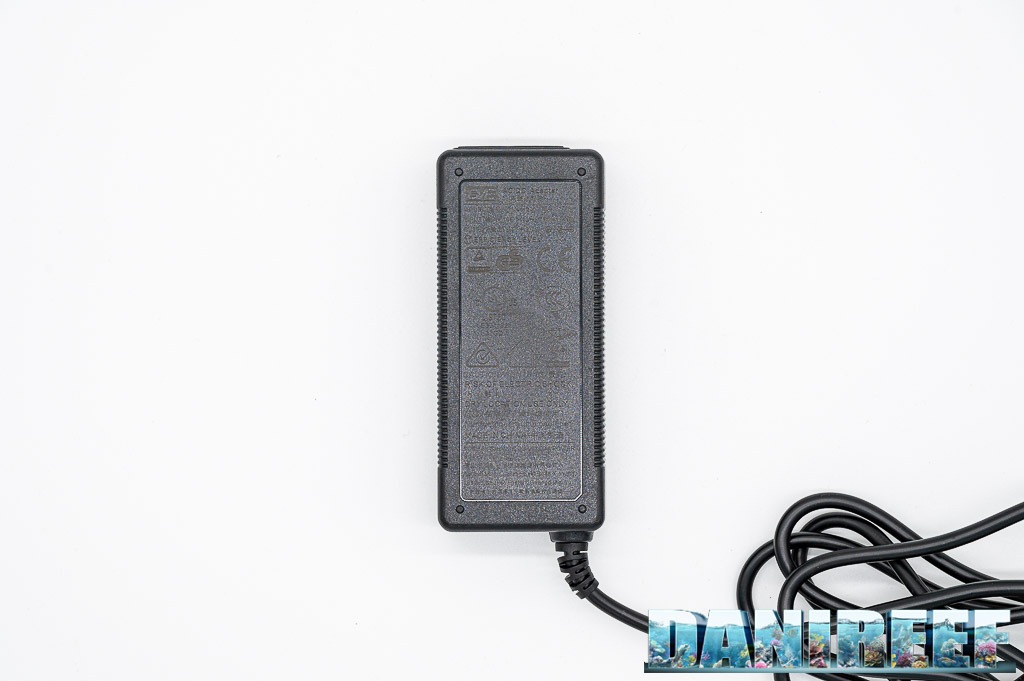
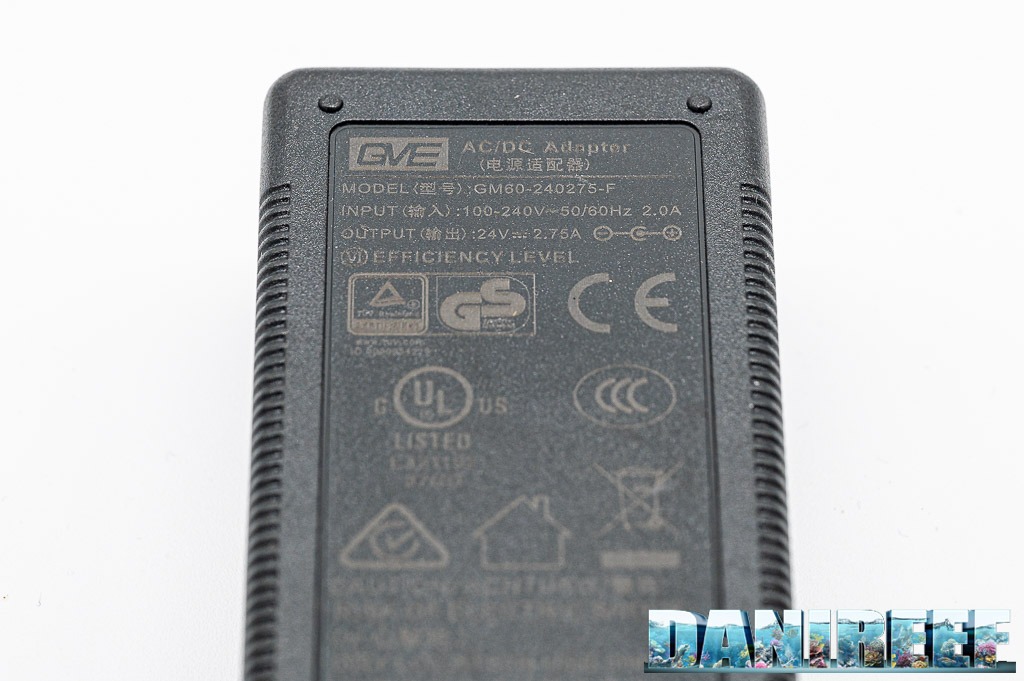
Head Test
The first test we did was to measure the head. As you know, head is the ability of the pump to elevate water above a certain level. To do this, we measured the water level reached inside a rubber hose.
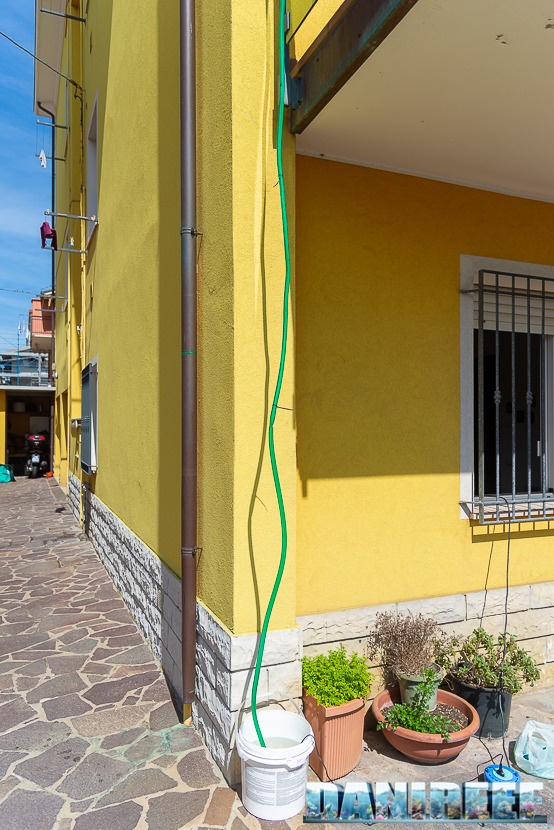
As you can see in the previous photo, we secure the pipe to the balcony. Then we turn on the pumps we need to measure, and after waiting 10 minutes for them to stabilize, we measure their head. We repeat this for each power step. In the video you can see an excerpt of this working methodology. We then present the table that we extrapolated from the data we measured.
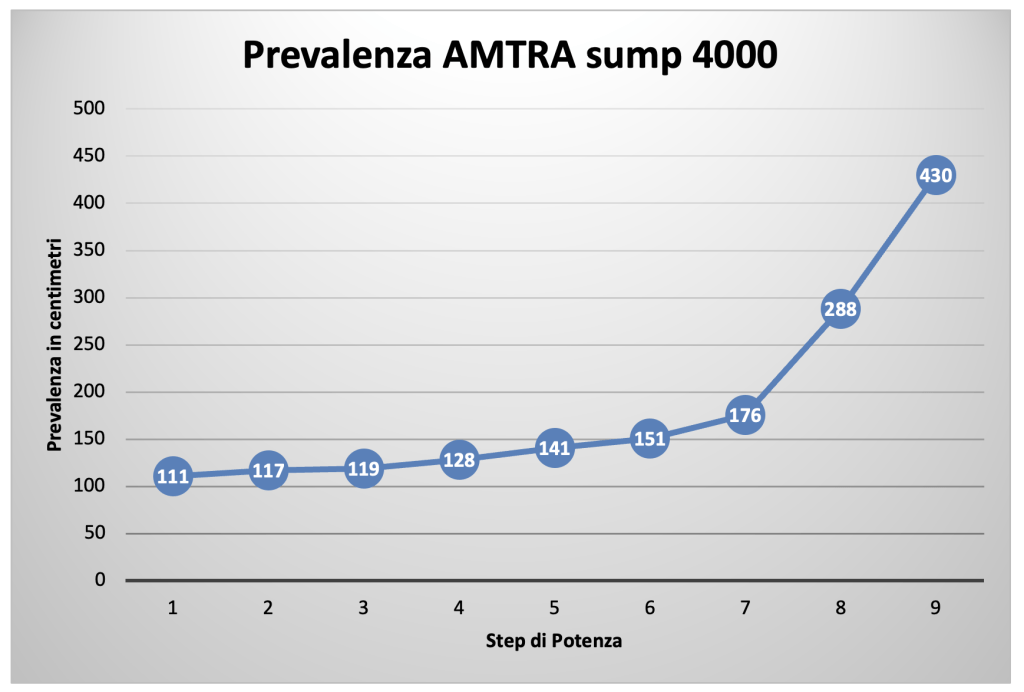
The head goes from 111 cm to 430 cm. The trend is rather low and linear until the 5th step, where it starts to increase. The last 2 steps increase the head considerably. The maximum stated head is 420 cm, so the two values are practically the same. Nothing to add, and in this case bravo Amtra.
Flow Test
Measuring the flow rate was easy thanks to the flow meter DigiSavant DIGIFLOW 6710M. First, we connected our connecting tubes to our flow meter. In the video we explained our procedure in detail.
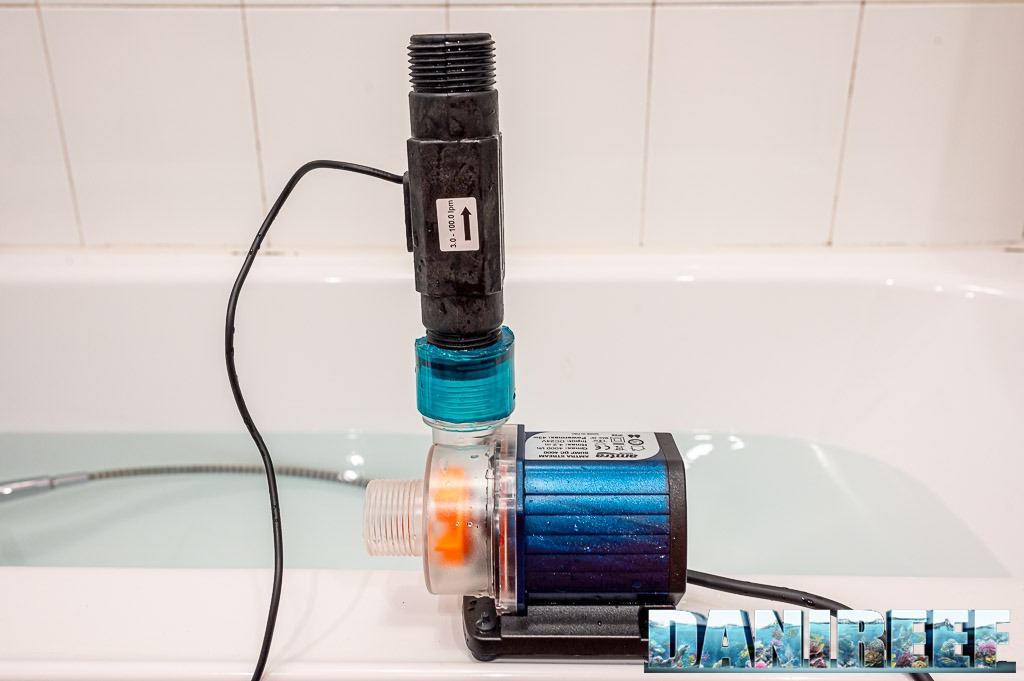
We tried to make the meter fit snugly against the pump outlet. The measurement is expressed in liters per minute. Then simply multiply the result by 60 to get the liters per hour.
Of course, we point out that the measurement is valid within the conditions under which we made the measurements. The connecting pipe so designed may have induced leakage in the system.
The system thus designed gave us the following values:
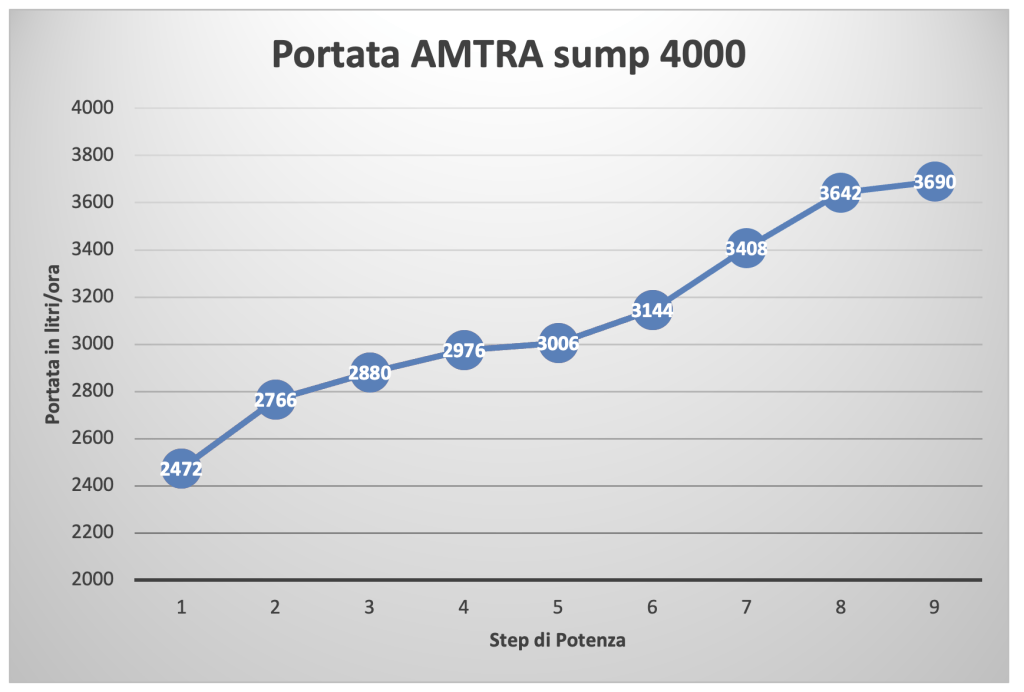
The maximum flow rate was 3,690 l/h (or 61.5 l/m*60), just below the 4,000 l/h declared. The pump thus achieved 92.3% of the declared value under the test conditions. An excellent result, the best ever measured in the DaniReef LAB for a centrifugal pump with variable flow rate. Indeed, consider 66% for the Ecotech Marine Vectra M1, 67% for the Waveline DC6000, 70% for the Hydor Seltz D6000, 86% for the Rossmont RX 3200, 82.6% for the Rossmont RX 5000, and 82.3% for the ASF NewJet NJ2000, just to name a few of the pumps we’ve been testing lately. And remember that we have also had the opportunity to try pumps with flow rates less than 50% of the stated… Later on, we will show the comparisons with all the return pumps we have measured.
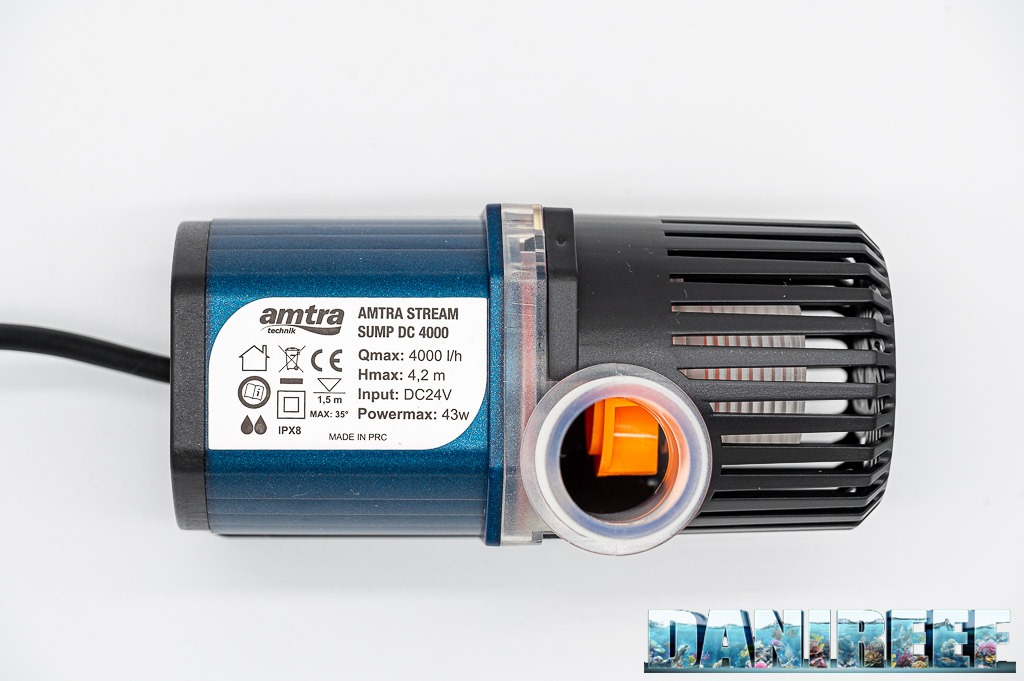
When you have to employ a return pump pay attention to the following aspects that can lower, sometimes drastically, its flow rate. Use the biggest hose nozzle that comes with it. Always use a pipe that is wide enough. The pipe should be as short as possible and make as few 90-degree turns as possible. Otherwise, the expected flow rate will decrease even more dramatically.
Energy Consumption Test
The detection of instantaneous consumption was made possible through the use of the convenient tool RCE PM600 which is also capable of measuring Cos(fi) (or phasing). The result is given in watts.
The following graph illustrates the measurements.
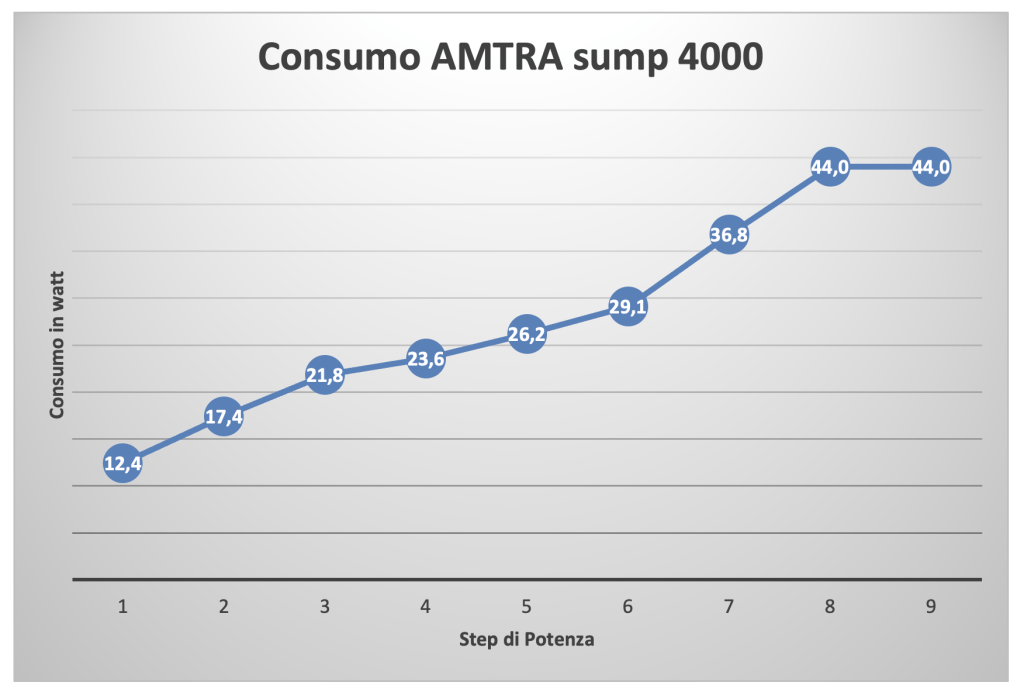
The stated maximum consumption of the Amtra Stream Sump 4000 is 43 watts, and according to our measurements we are at a maximum of 44 watts, practically a 2.3% more than the stated value. Again we can say that the value is practically the same.
Considering a consumption of 44 watts, and an energy cost of 0.27 euro per kwh, we could employ this pump continuously for a full year at its maximum performance with a consumption of about 402 kwh, from which comes a cost of 109 euro per year, or 9 euro per month. A practically negligible cost.
Given the size of the pump and especially given its flow rate, it was not possible to conduct our usual noise test. But in our video you can appreciate the almost total silence of the pump.
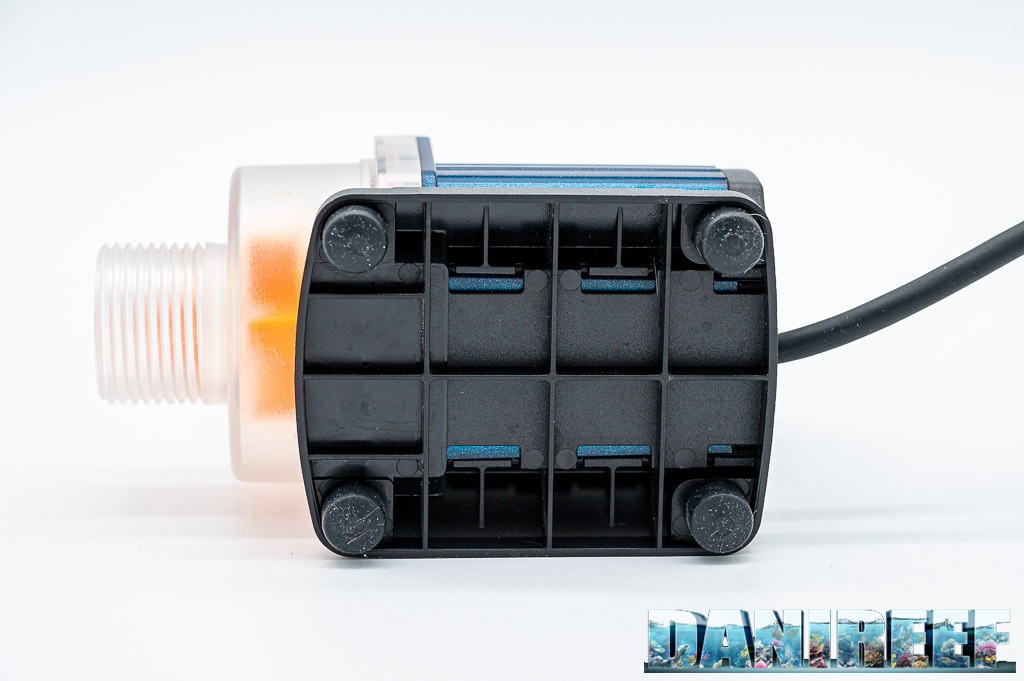
To decrease noise, 4 small soft rubber feet are given that fit into the slide, which in turn fits under the pump body. With the dual purposes of decreasing vibration and noise.
Our comments
The results far exceeded our wildest expectations. The pump proved to be perfect in fulfilling its promises, and this is a detail that happens extremely rarely, especially when it comes to flow rate, a value in which we often fall short of the declared data. But not in this case – all the values are practically coincident with what the company declared.
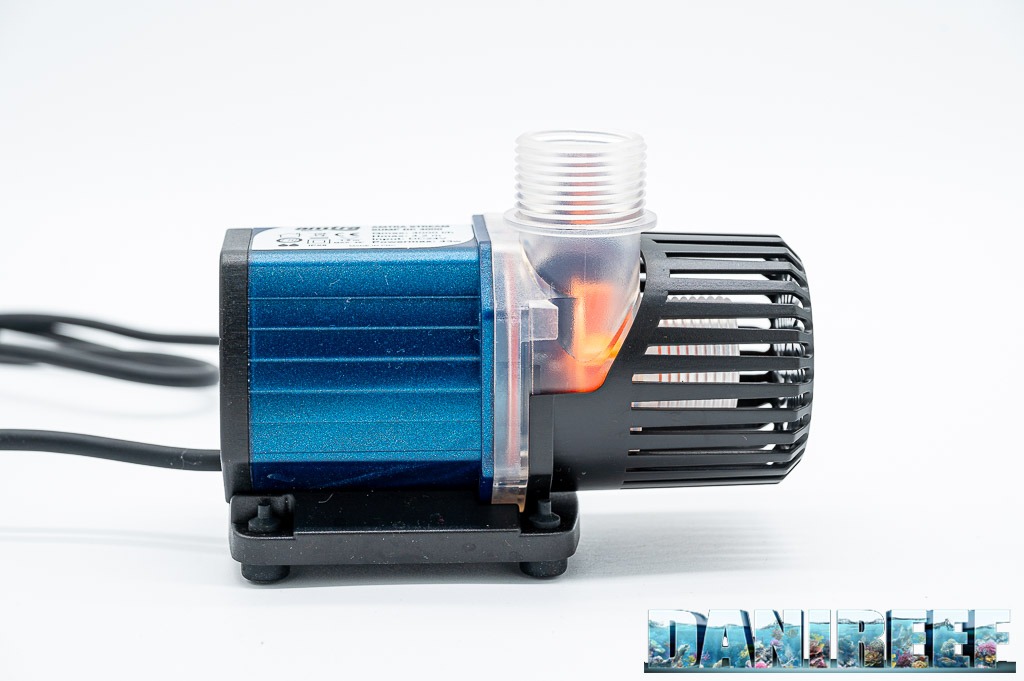
The conclusions section is really full of material, partly because of the comparisons we are going to make with similar pumps whose performance we have measured over time.
Comparison with other pumps
The comparisons with all the other pumps I have been able to measure to date are very interesting, namely with ASF, Eheim, Hydor, Tunze, Sicce, Corallinea, Waveline and Ecotech Marine, of which you can see the aggregate data in the following table.
We sorted the table by what we defined to be the reference value of the pump-that is, the product of the flow rate times the head divided by 2. Thus obtaining the area subtended by the two quantities. This we believe is the only method for comparing homologous pumps. If the reference value deviates greatly, the pumps, in our humble opinion, are not comparable.
| Pump | Head | Scope | Reference value | Consumption | Price | Efficiency | Economic Efficiency | Annual Cost |
| Eheim 1250 | 195 cm | 1205 l/h | 1175 | 23.8 w | 98 € | 50,6 l/h*w | 12,3 l/h*€ | 56 € |
| Newa Jet 1700 | 200 cm | 1638 l/h | 1638 | 31,2 w | 43 € | 52,5 l/h*w | 38 l/h*€ | 74 € |
| ASF NewJet DC 2000 | 290 cm | 1770 l/h | 2566 | 25,2 w | 99 € | 70,2 l/h*w | 17,9 l/h*€ | 60 € |
| Sicce Syncra 3 | 296 cm | 2375 l/h | 3515 | 42,3 w | 100 € | 56,1 l/h*w | 23,7 l/h*€ | 100 € |
| Rossmont Riser RX 3200 | 281 cm | 2766 l/h | 3886 | 53,7 w | 115 € | 51,5 l/h*w | 24 l/h*€ | 127 € |
| Eheim 1260 | 350 cm | 2434 l/h | 4260 | 62,1 w | 155 € | 32,2 l/h*w | 15,7 l/h*€ | 147 € |
| Tunze 1073.50 | 436 cm | 2143 l/h | 4672 | 38,8 w | 180 € | 55,2 l/h*w | 11,9 l/h*€ | 92 € |
| Sicce Syncra 4 | 380 cm | 3709 l/h | 7047 | 94 w | 160 € | 39,5 l/h*w | 23,2 l/h*€ | 222 € |
| Corallinea BQ5000 | 404 cm | 3504 l/h | 7078 | 83,2 w | 120 € | 42,1 l/h*w | 29,2 l/h*€ | 197 € |
| Rossmont Riser RX 5000 | 364 cm | 4128 l/h | 7513 | 83,7 w | 145 € | 49,3 l/h*w | 28,5 l/h*€ | 198 € |
| Waveline DC6000 | 392 cm | 4008 l/h | 7857 | 50,2 w | 283 € | 79,7 l/h*w | 14,1 l/h*€ | 119 € |
| AMTRA Stream Sump 4000 | 430 cm | 3690 l/h | 7934 | 44 w | 159 € | 83,86 l/h*w | 23,1 l/h*€ | 109 € |
| Hydor Seltz D6000 | 450 cm | 4194 l/h | 9437 | 53 w | 125 € | 79,1 l/h*w | 33,5 l/h*€ | 125 € |
| Ecotech Marine Vectra M1 | 610 cm | 4944 l/h | 15080 | 89.5 w | 399 € | 55,1 l/h*w | 12,3 l/h*€ | 212 € |
It can be seen from the table that from the economic point of view, i.e., with respect to the flow rate generated per single euro, this pump Amtra is in the average of affordable pumps. But as far as technical efficiency is concerned, considering only maximum values, this Amtra Stream Sump 4000 is the best ever measured to date. Almost 84 l/h per single watt!!! So if the pair of values you need match, or are at least close to this pump you have no excuse not to buy it. Besides, it is an adjustable pump – what else would you want from a pump?
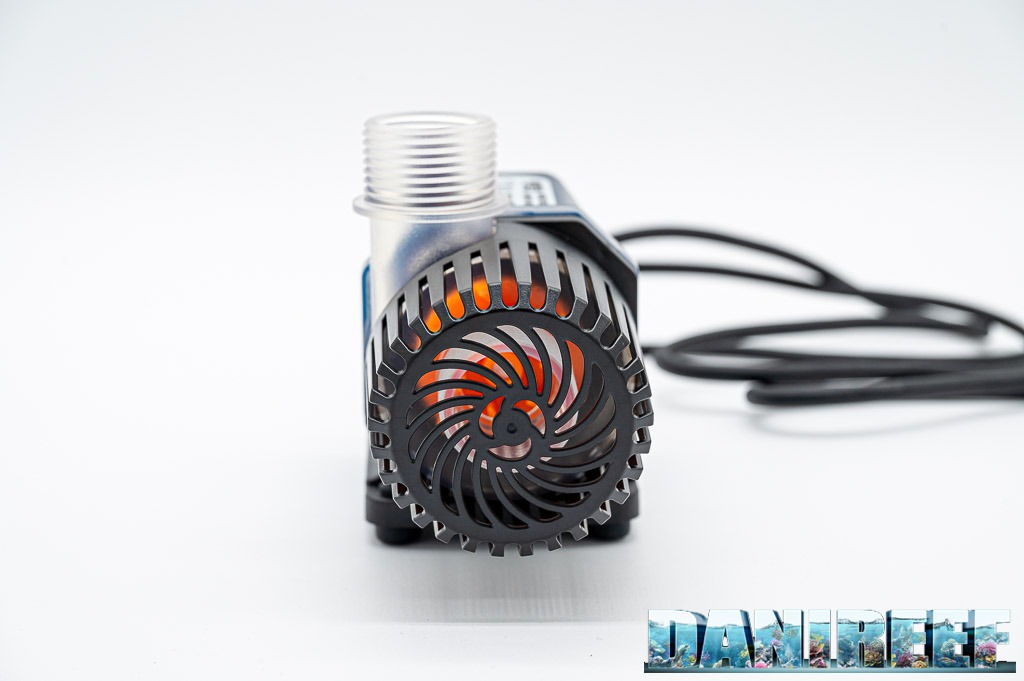
The Report with Stated Data
Let us now look at the comparison with the manufacturer’s stated data.
Head
| pump | head | measurement | deviation |
| Amtra Stream Sump 4000 | 420 cm | 430 cm | +2 % |
The head measure has very little deviation. The pump delivers what it promises.
Flow rate
| pump | scope | laboratory measurement | deviation |
| Amtra Stream Sump 4000 | 4.000 l/h | 3.690 l/h | – 7,8 % |
The deviation between measured and declared flow rate is close to 8%, very few times have we seen an outcome so close to the declared values. Chapeau! The differences are often closer to 40%.
Energy Consumption
| pump | consumption | laboratory measurement | deviation |
| Amtra Stream Sump 4000 | 43 w | 44 w | + 2 % |
The power consumption is about 2% higher; we can say that it is perfectly coincident with what is claimed.
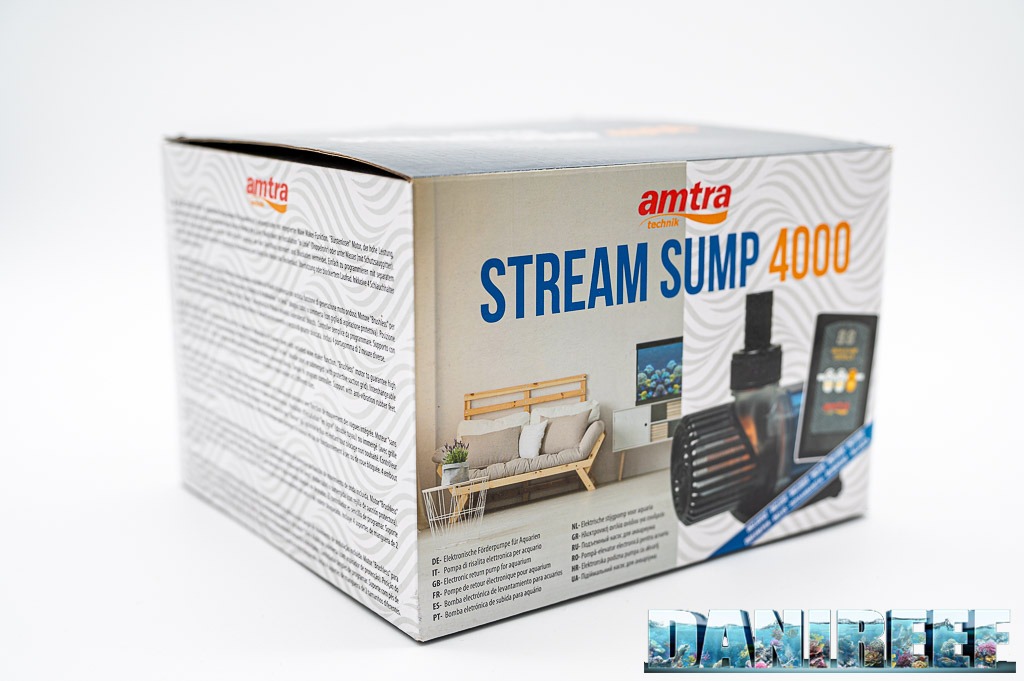
Correspondence to stated data
Finally, just for comparison, we can give a match value against the data stated by the house for flow rate, head, and consumption.
| pump | head | scope | consumption | Final Value (in absolute value) |
| Amtra Stream Sump 4000 | 102 % | 92% | 102 % | 98,7 % |
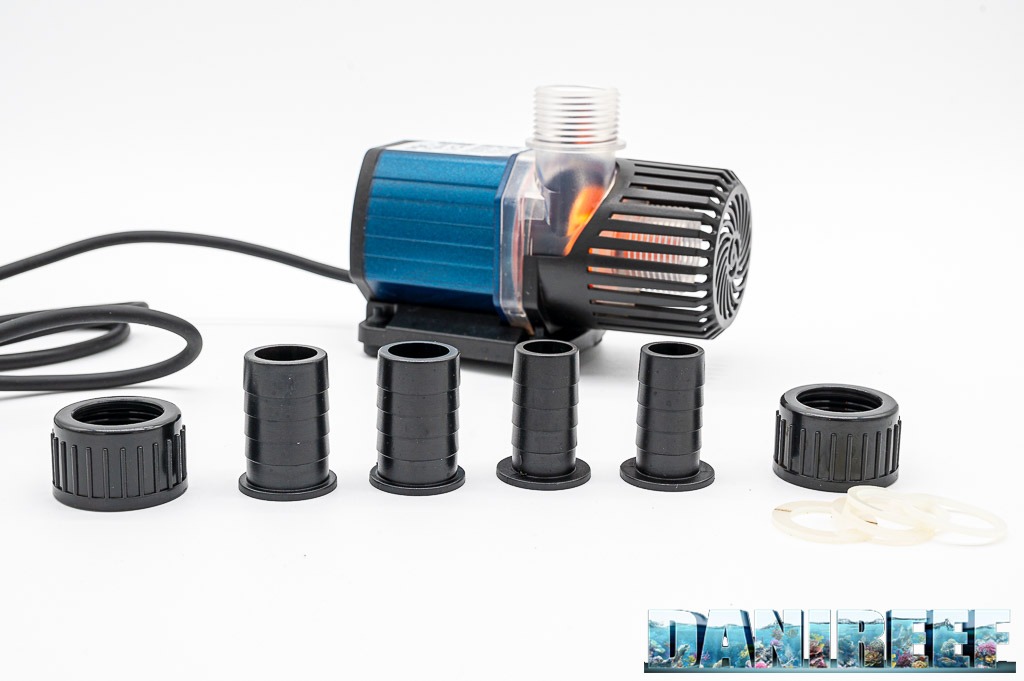
Conclusions
The reference value of the AMTRA Stream Sump 4000 return pump is 7,934 l*m/h, where for comparison the declared reference value is 8,400, a loss of just under 6%. Recall that the reference value is the area subtended by the flow and head values. In practice we are going to do the operation of (flow rate x head/2).
The 6% loss is really an excellent value, given that virtually all direct competitors are doing worse, much worse.
For our aquarium we always have to consider what it actually expresses, not what it should have expressed with respect to the stated data. But in this case the two values considered are virtually identical. An excellent added value when choosing.
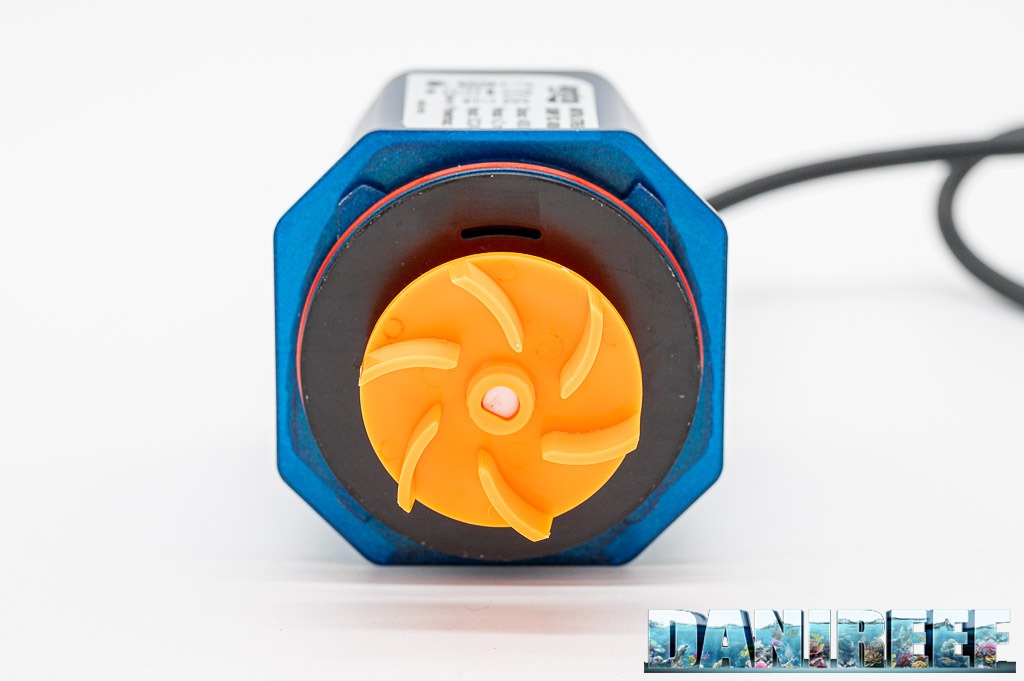
Disclaimer: We thank Amtra for providing us with the Amtra Stream Sump 4000 pump for this review.
[Translated by Aisja Baglioni]










0 Comments